Virupaksha Temple is located in Hampi in the Vijayanagara district of Karnataka, India. It is part of the Group of Monuments at Hampi, designated as a UNESCO World Heritage Site. Hampi was designated a UNESCO World Heritage site in 1986.[1] This temple stands just 400 meters from Hampi Bus Stand, at the western end of Hampi Bazaar. Positioned along the southern bank of the Tungabhadra River.

Table of Contents:-
It’s a well-known spot in Hampi, dedicated to Lord Virupaksha, a form of Lord Shiva. He’s also known as Pampapathi, which means the consort of Pampa (Another name of the goddess Parvati).
Quick Facts
- Timing: 06:30 AM to 08:00 PM
- Entry Fee: No entry fee required
- Photography: Allowed
- Location: Google Maps
- Must-see Things
Sthala Purana (Local Legend)
The Virupaksha Temple’s Sthala Purana, its local legend of origin, intertwines beautifully with Hindu mythology. There are two main versions of the story;
Version 1: Lord Shiva did penance at Hemakuta Hill (near the South side of the Virupaksha temple) before marrying Pampa, also known as Parvati.
Version 2: Parvati, also known as Pampa, yearning for Lord Shiva’s attention. Determined, she embarks on a strict penance atop Hemakuta Hill, near the South side of the Virupaksha temple. Concerned about disrupting Shiva’s deep meditation, the gods call upon Manmatha, the god of love, to intervene. However, Manmatha’s attempt backfires, enraging Shiva who burns him to ashes. Despite this setback, Parvati remains steadfast, mirroring Shiva’s ascetic practices and unwavering devotion.
Finally moved by her dedication, Shiva accepts Parvati, and their union is said to have taken place on Hemakuta Hill. The Virupaksha Temple, dedicated to Lord Shiva (Virupaksha), is believed to be built on this very spot, while the Tungabhadra River, originally called Pampa, is said to flow in reverence for Parvati’s penance. The temple thus stands as a testament to the enduring love between Shiva and Parvati, and remains a sacred pilgrimage site for devotees seeking blessings and spiritual growth.
The place where Parvati (Pampa) resided became known as Pampakshetra (“land of Pampa”) and the nearby river became the Pampa river. Over time, “Pampa” morphed into the Kannada word “Hampe,” which eventually evolved into the English name “Hampi” we know today.
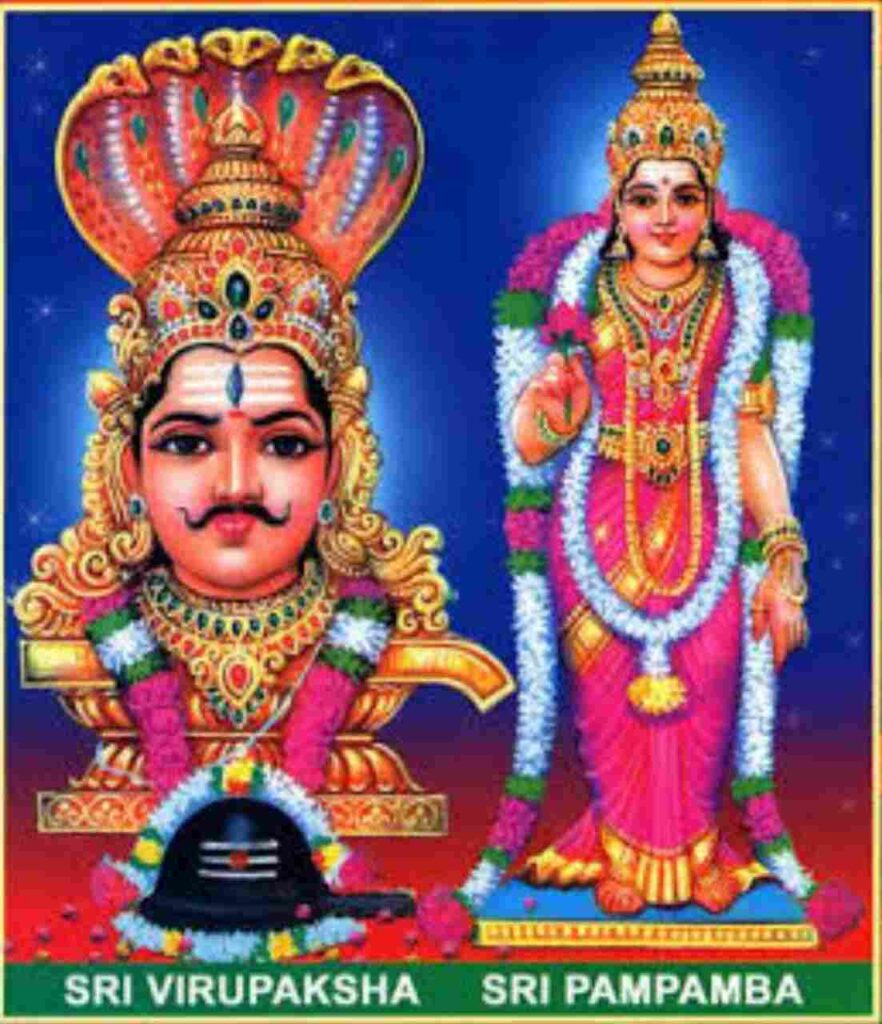
Temple History
The Temple began as a small shrine in the 7th century CE[2] and later expanded into a vast complex during the Vijayanagara reign. The expansive temple complex was built by Lakkana Dandesha, a chieftain under King Deva Raya II, also known as Prauda Deva Raya, of the Vijayanagara Empire, in the 14th century.[3] Interestingly, the temple predates the establishment of the Vijayanagara capital in this area. The Ranga Mantapa, the central hall leading to the sanctum sanctorum, was constructed in 1509/1510 under the orders of Krishnadeva Raya.
East Gopuram
The Virupaksha Temple features three towering Gopurams. The main entrance is through the East Gopuram, the largest among them, boasting nine tiers and towering at 160 feet (49 meters).[4] It is adorned with two projections at the top resembling a cow’s horns. This towering Gopuram stands as the centerpiece, captivating visitors with its majestic presence and impressive architecture.
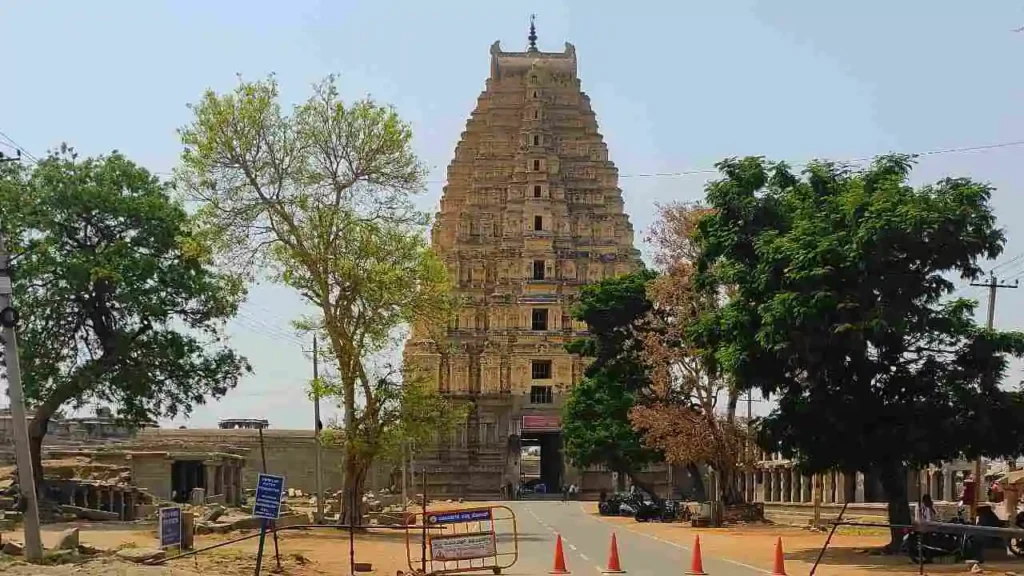
Lakshmi the Elephant
Lakshmi the Elephant adds a special charm to the Virupaksha Temple in Hampi. Visitors have the opportunity to feed her bananas, and if they prefer, they can also offer her a currency note. Lakshmi has been trained to bless visitors with her trunk when they present a currency note. She is under the care of her handler who looks after her within the temple premises.
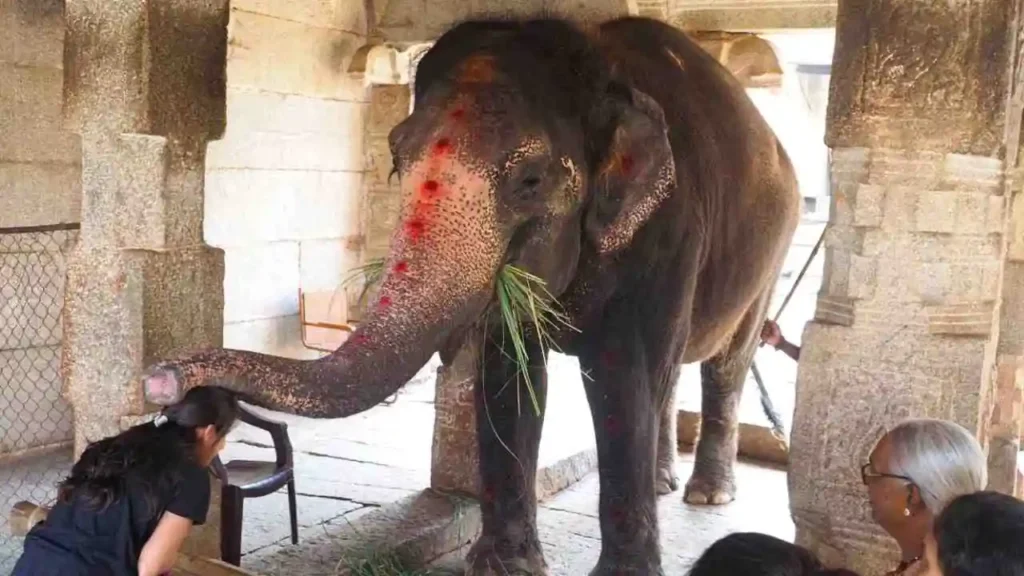
Ceiling Paintings
One of the most fascinating aspects of this temple is the breathtaking murals gracing the ceiling of the Ranga Mantapa, the central hall leading to the sanctum sanctorum. This hall was constructed in 1509/1510 under the orders of Krishnadeva Raya. Most scholars believe that these paintings were created around the same time as the building.[5]
This paintings inspired by local folklore, ancient Indian scriptures, epics, and Kannada literature such as Girija Kalyana by Harihara, these paintings vividly depict the rich traditions and vibrant culture of that time.[6] Although the passage of time has taken its toll, causing many of the murals to fade, recent efforts have been made to restore some of these masterpieces, ensuring the preservation of this invaluable heritage.

An Inverted Gopura
At Virupaksha Temple, an intriguing optical illusion occurs when sunlight enters a small room through a tiny aperture. As the sunlight hits the Gopuram, it creates a shadow that falls through another opening, forming an inverted reflection on the opposite side of the temple.
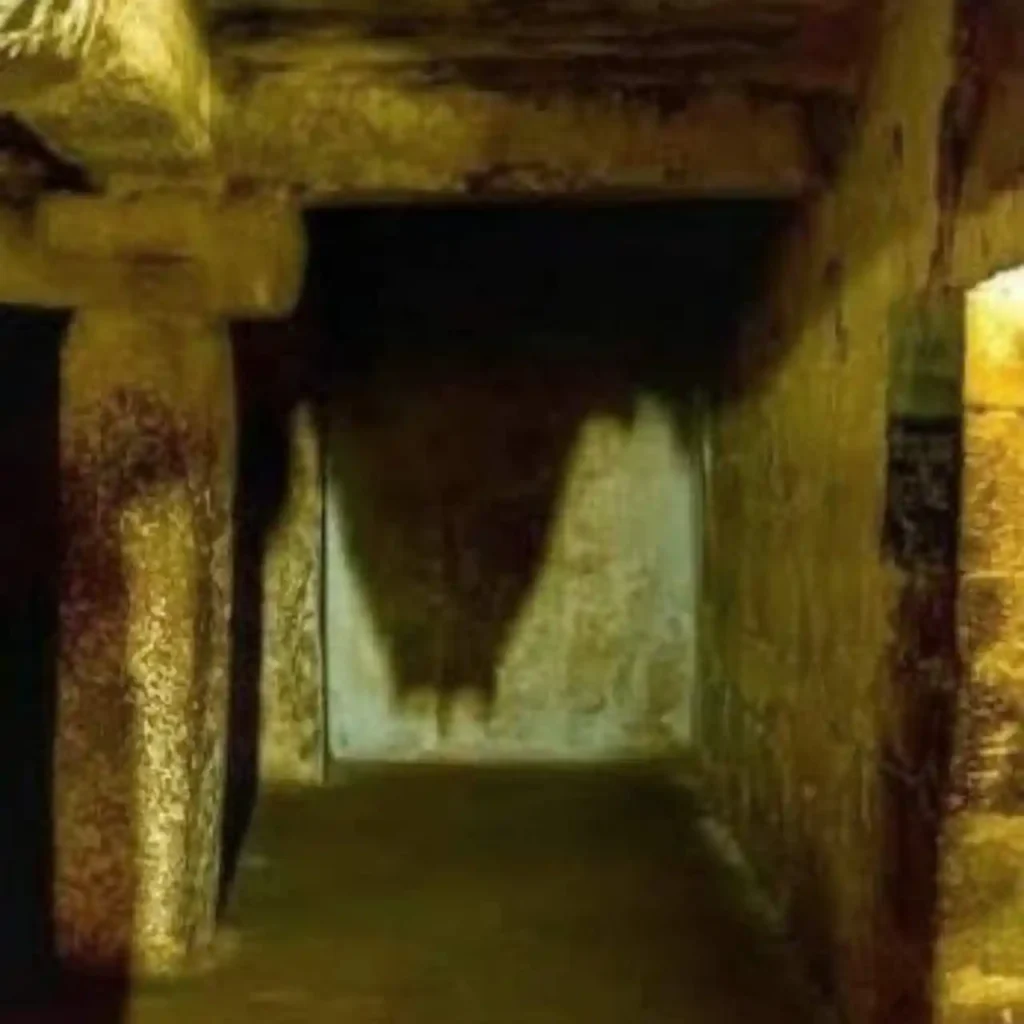
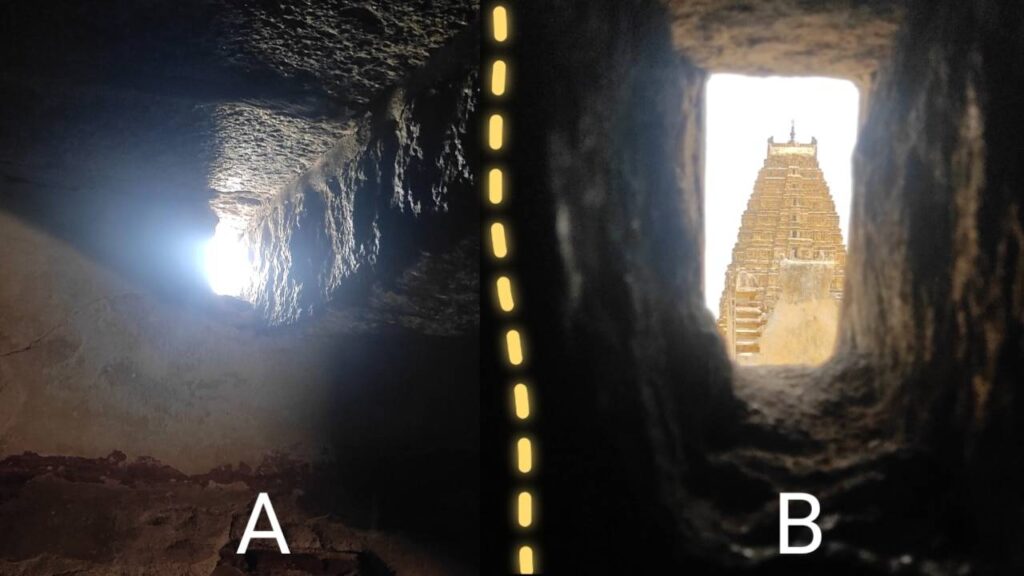
Manmatha Honda
Manmatha Honda is a broad tank located to the northeast of the Virupaksha Temple, and there are various ancient temples on the eastern and western banks of this tank. An 1199 C.E. inscription mentions the Manmukha tirta tank. Legend goes that Manmatha disturbs the penance of Lord Shiva in Hemakuta Furious, Shiva opens his third eye, and Manmatha is burnt to ashes. The boulders of Hemakuta melted with him too; its fluid stream joins the tank. As per this legend, it was named as Manmatha Honda.[l]
It is a Teppotsavam pond, and the Utsava Murthy, or the idols of Pampa and Virupaksha, are worshipped in the Teppotsava during temple festivities. In the month of Margashira and Chaitra, Phalapuja and Brahmarathotsava are celebrated here, respectively. During both these festivals, Teppotsava is celebrated gloriously. When the Tungabhadra River overflows, a large quantity of water gets collected in the tank. It is believed that one is purified and rid of all their sins by dipping in this pond.
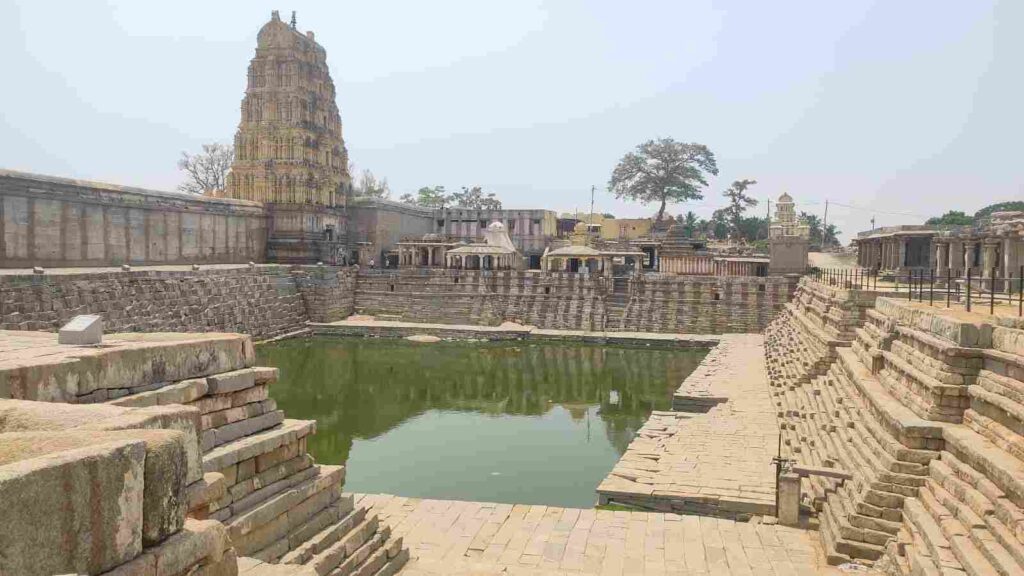
Festivals
Virupaksha Car Festival:
The Rathotsava (Virupaksha Car Festival) is a fair that lasts for 9 days from the Dashami of the month of Chaitra, According to the Gregorian calendar it usually falls in the month of March or April. The Hampi fair is known as Pampapathi fair or as Hampamma fair. The chariot of Virupaksha carries the idols of Pampa-Virupaksha, and chariot of Chandramouleshwar carries that of Sage Vidyaranya, both of which are pulled in the Virupaksha Chariot Street. The chariot festival is gloriously celebrated. This is the famous Brahmagiri Rathotsava celebrated once in a year in the month of Chaitra, on a full moon day. This day is also known as Hampi Hunnime.
Phalapuja and Kalyanotsava:
There is yet another important festival celebrated in themonth of Margashira. This is known as Phalapuja. During the Phalapuja, Kalyanotsava, Dolotssava and Pallakki Utsava also conducted. This Phalapuja is a pre-marital ritual of Hampi, Virupaksha and Pampambike. This marks the engagement of Pampa – Virupaksha. On this occasion, they conduct talks, agreements, exchanges of items, and confirm the wedding dates. Once the date is fixed, Teppotsava ceremony is gloriously celebrated in Manmukha Teertha (Manmatha Honda) with the ustava murtis (main idols of the deities). The Teppotsava is a customary ceremony conducted every year.
The worship of Goddess Pampa predates Vijayanagara and epigraphically, the evidence traces it back to the 7century C.E. This folk-goddess came to be ‘Sanskritized’ through the story of her marriage to Virupaksha, said to be a form of Shiva. The Phalapuja and Kalyanotsava (wedding) festivals remain the most important festivals of the Virupaksha Temple and are celebrated in December.[m]
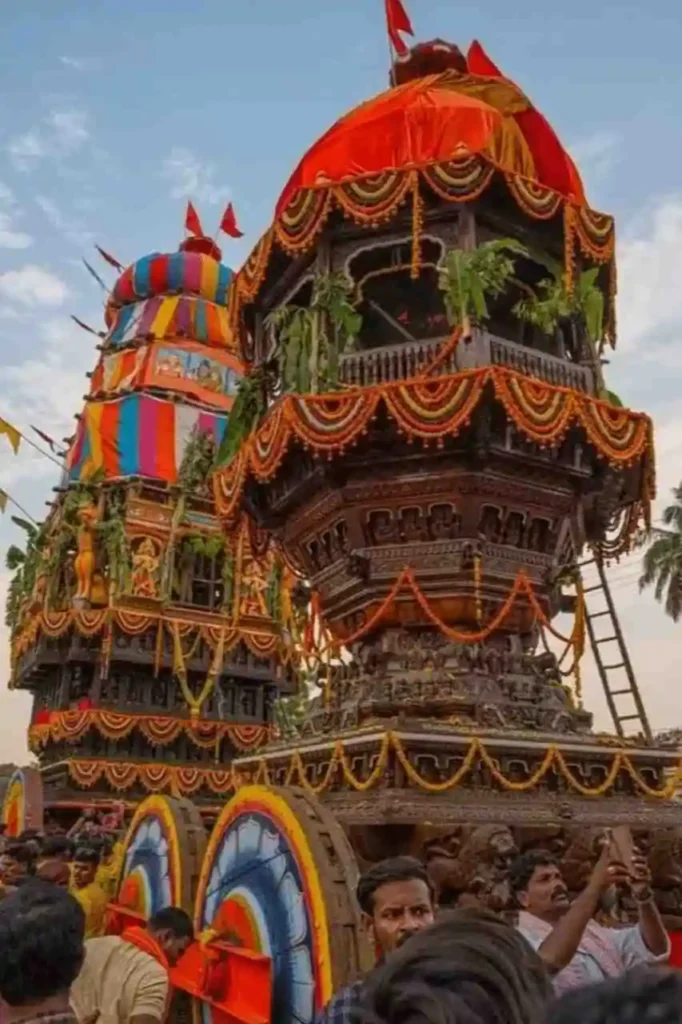
Must-see attractions in the Virupaksha Temple
When exploring the Virupaksha Temple in Hampi, make sure not to miss out on these captivating highlights:
Main Entrance Tower:
As you approach the Virupaksha Temple, the towering main gopuram (entrance tower) immediately captures your attention, beckoning you into a realm of divine splendor. Standing tall against the sky, this majestic structure boasts intricate carvings, depicting scenes from Hindu mythology, and architectural details that showcase the craftsmanship of ancient artisans. With its imposing presence and intricate adornments, the main entrance tower serves as a mesmerizing introduction to the architectural marvels awaiting within the sacred precincts of the temple.
Lakshmi the Elephant:
Lakshmi, the temple elephant, is a beloved resident of the Virupaksha Temple. Visitors have the opportunity to witness the majestic elephant and even receive blessings from her as part of the temple rituals.
Rangamantapa:
The Rangamantapa is pillared hall used for performances and religious ceremonies in the past. Adorned with intricately carved pillars, this hall is a stunning example of Vijayanagara architecture.
Ceiling Paintings in Rangamantapa:
The ceiling of the Rangamantapa is adorned with vibrant and intricate paintings depicting mythological scenes. These paintings provide a visual treat and offer insights into the rich cultural heritage of the region.
Sanctum Sanctorum:
The innermost sanctum of the temple is dedicated to Lord Virupaksha (Lord Shiva), housing the main deity’s shrine where devotees offer prayers and seek blessings.
An Inverted Gopura:
This unique architectural feature is an upside-down reflection of the main gopuram, creating a mesmerizing visual effect when viewed from certain angles.
Manmatha Honda:
The temple tank, known as Manmatha Honda, is a serene water body located within the temple complex, offering a tranquil atmosphere for meditation and reflection.
Hampi Bazaar:
Adjacent to the temple complex, the bustling Hampi Bazaar is a vibrant marketplace where visitors can explore traditional handicrafts, souvenirs, and local cuisine, immersing themselves in the rich cultural heritage of the region.
Carvings and Sculptures:
Carvings and sculptures adorn almost every inch of the Virupaksha Temple, showcasing the exquisite craftsmanship of the Vijayanagara artisans. Intricate carvings depict scenes from Hindu mythology, including epic battles, divine beings, and symbolic motifs. The temple walls feature intricate friezes portraying gods, goddesses, celestial dancers, and mythical creatures, reflecting the rich religious and cultural heritage of the region. Each sculpture is a masterpiece of skill and devotion, offering visitors a glimpse into the artistic splendor of ancient India.
Visitor Guidelines & Tips
- Dress Code: Please ensure that you are decently dressed when visiting the temple as a mark of respect. [q]
- Peaceful Evening Visits: For a tranquil experience and moments of serenity, consider visiting the temple during the evening hours.
- Lakshmi the Elephant: Don’t miss the opportunity to feed Lakshmi the elephant with bananas. Have some currency notes ready to receive her blessings, as she graciously lays her trunk on your head.
- Luggage: There is no provision for luggage storage at the temple.
- Photography: Cameras are permitted inside the temple premises at no extra cost. However, tripods are not allowed.
- Footwear Stand: A footwear stand is available near the East Gopuram on the west side. Please note that a nominal fee of INR 2 per pair of footwear is charged.
- Beware of Monkeys: Be cautious with your belongings as there are monkeys in the vicinity. Avoid carrying food items openly.
- Temple Timings: Kindly note that the temple sanctum sanctorum remains closed from 1:15 PM to 3:00 PM in the afternoon.
Visiting Hours:-
The Virupaksha Temple complex welcomes visitors from 06:30 AM to 08:00 PM. However, darshan of the deity is available from 6:30 AM to 1:15 PM and again from 3:00 PM to 8:00 PM.
The area between the main gopuram and the next small gopuram at the Virupaksha Temple in Hampi is always open. devotees sleep there, praying for good luck.
There is no entry fee charged at Virupaksha Temple. However, on special days, there is a nominal fee of ₹25 for entry into the sanctum sanctorum, while free entry is also available.
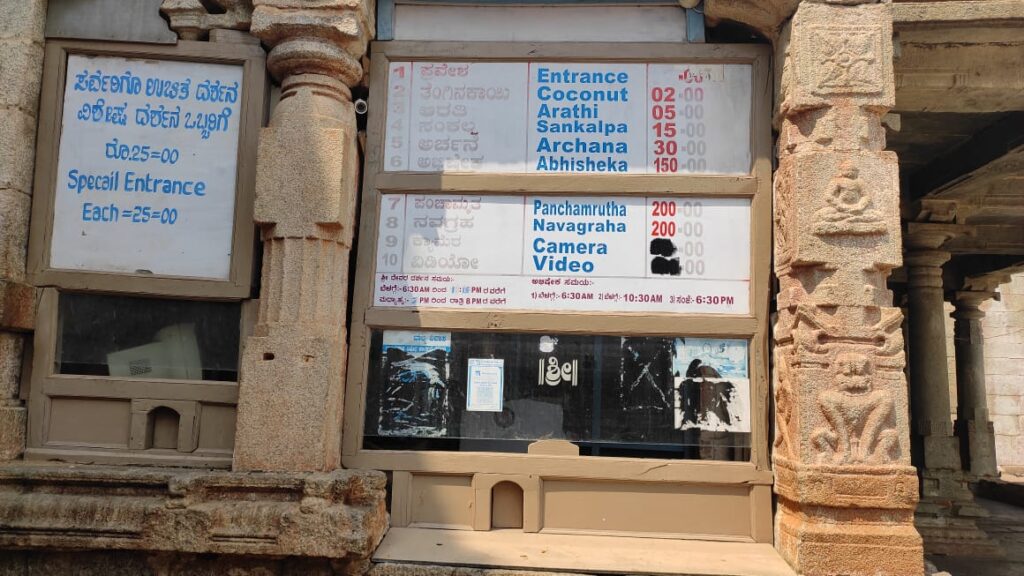
Best Time to Visit Hampi
The best time to visit Hampi is during the winter season, from October to February, except for the hottest afternoons. Hampi generally has moderate and dry weather throughout the year. Summers bring very high temperatures, so it’s not ideal to visit from March to June. During the monsoon season, from July to September, Hampi gets average but inconsistent rainfall, making it a bit cooler but humid.
Gallery:-
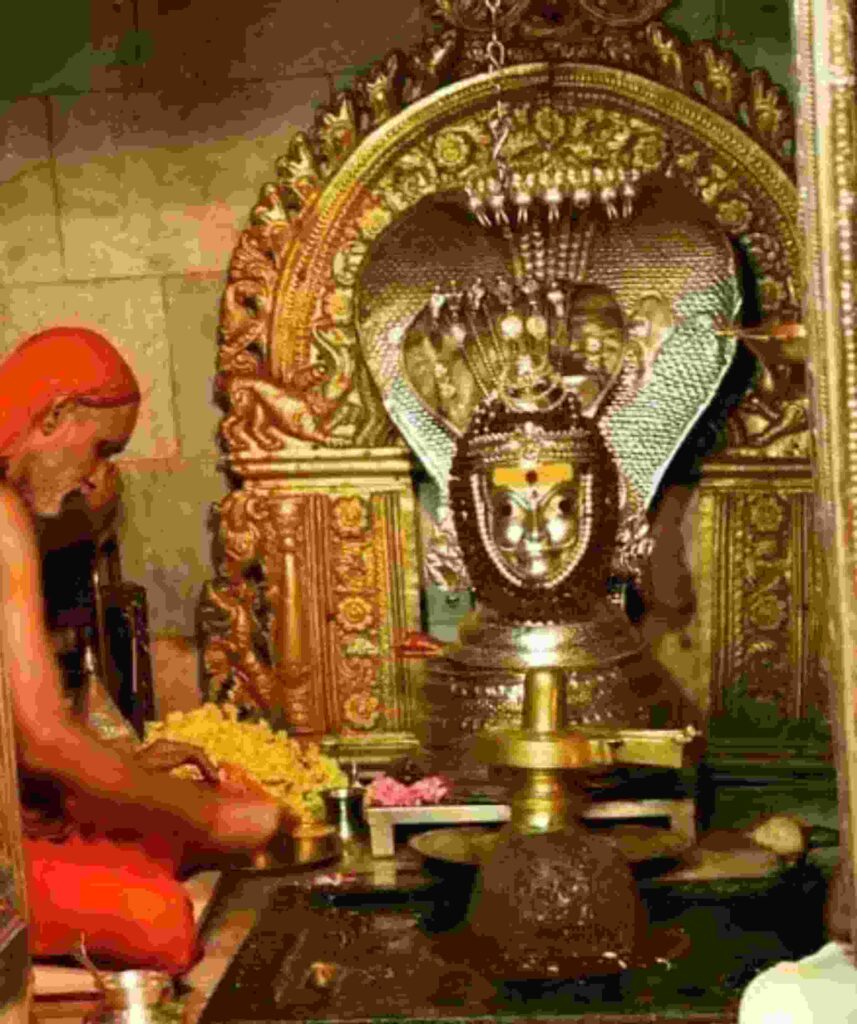
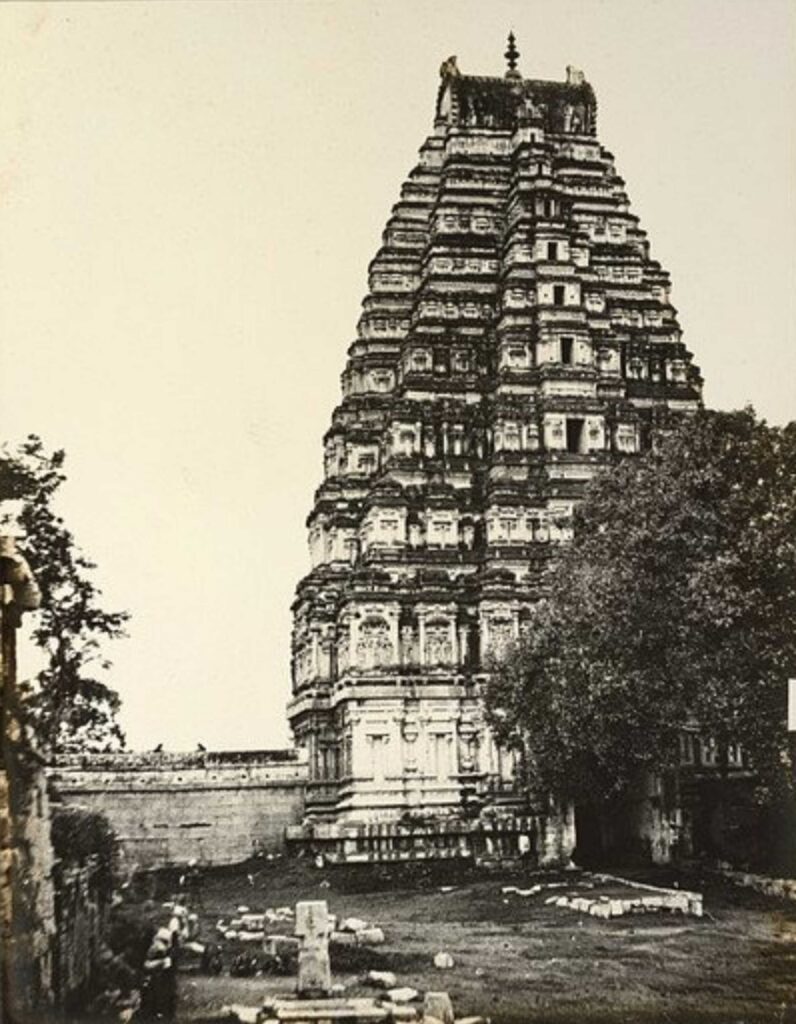
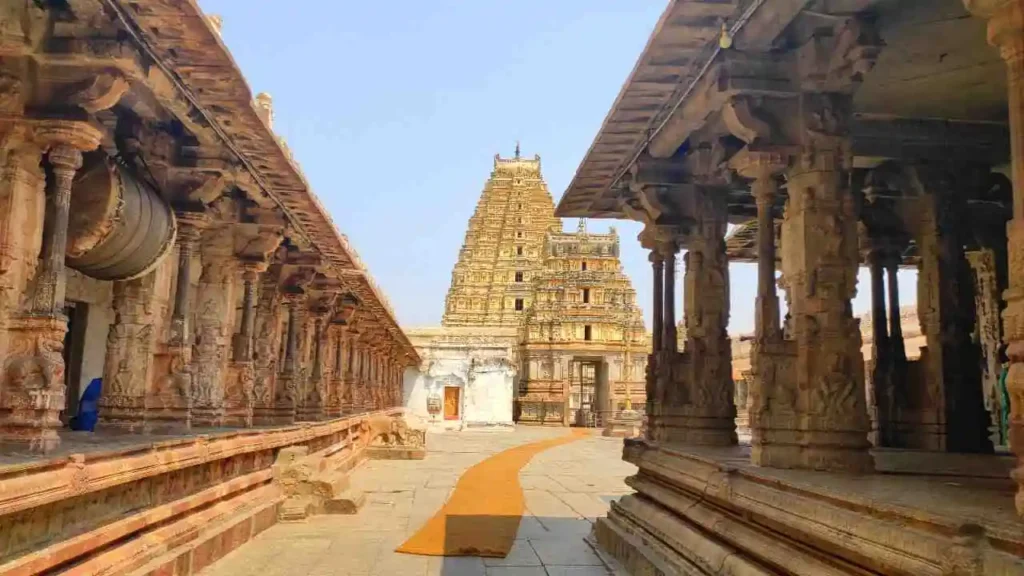
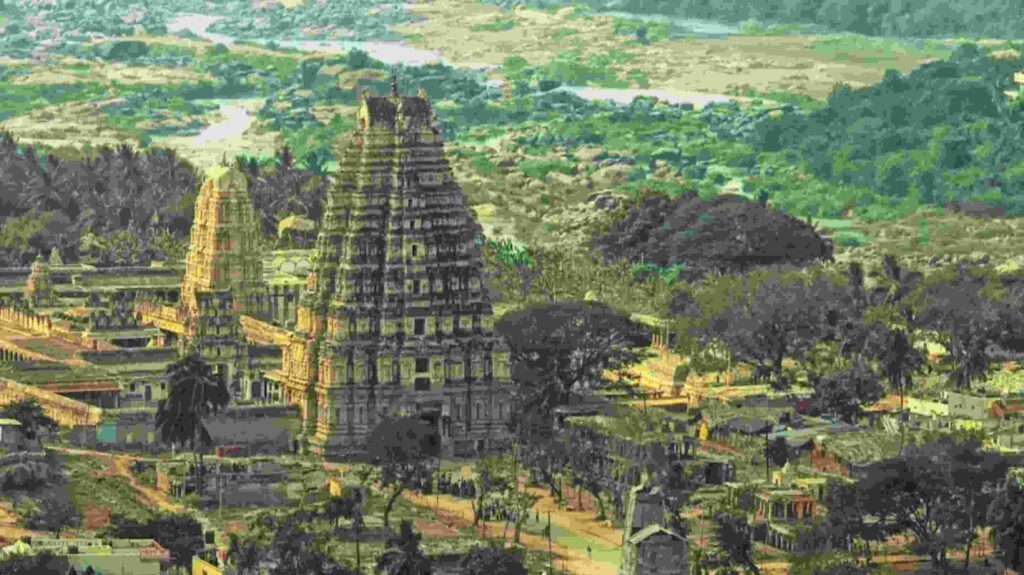
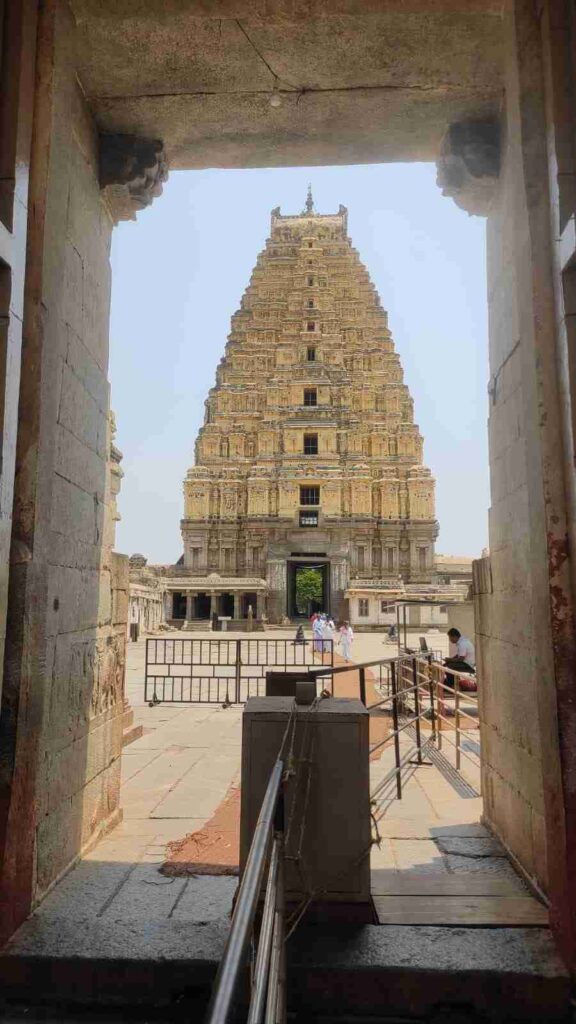
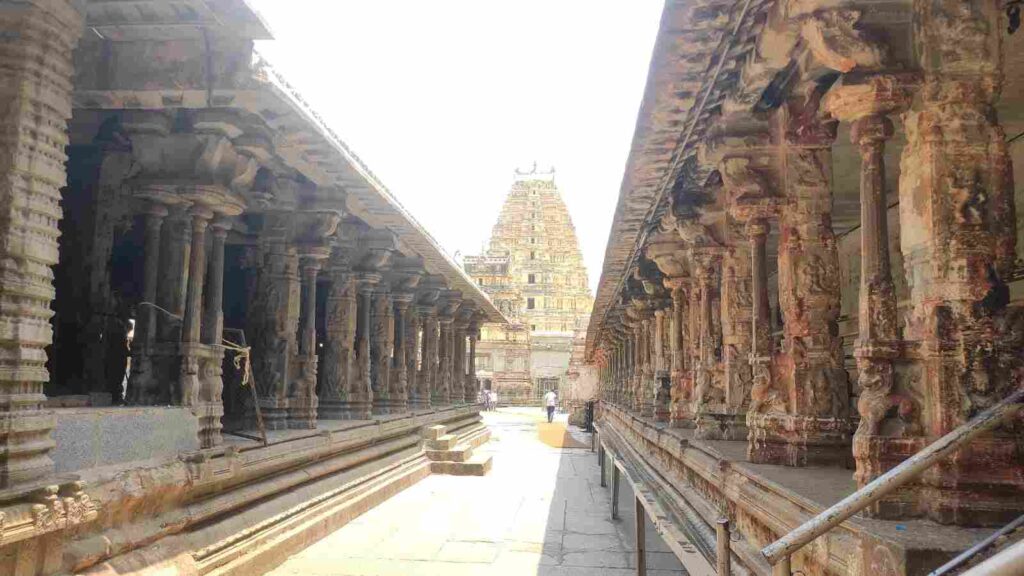
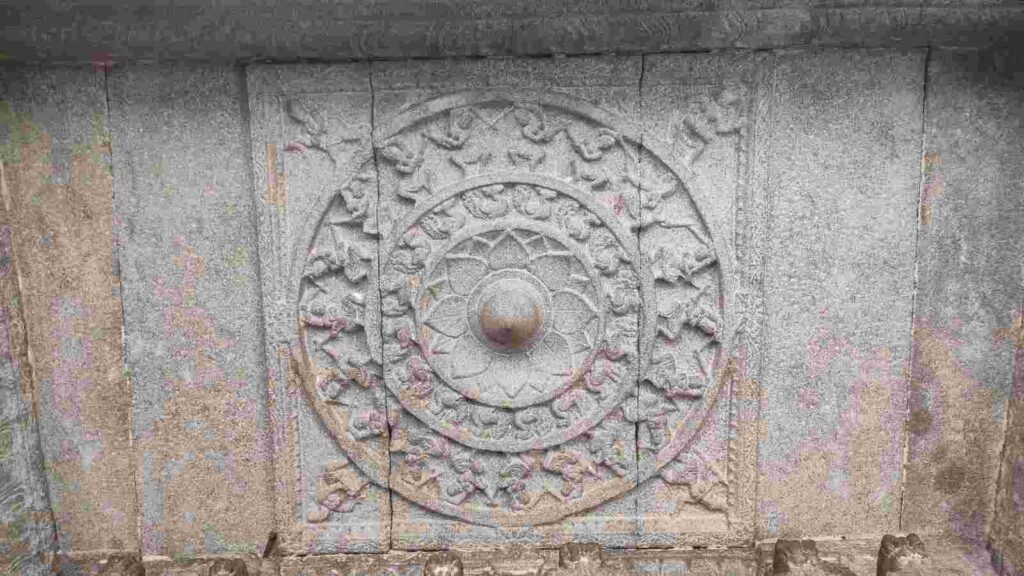
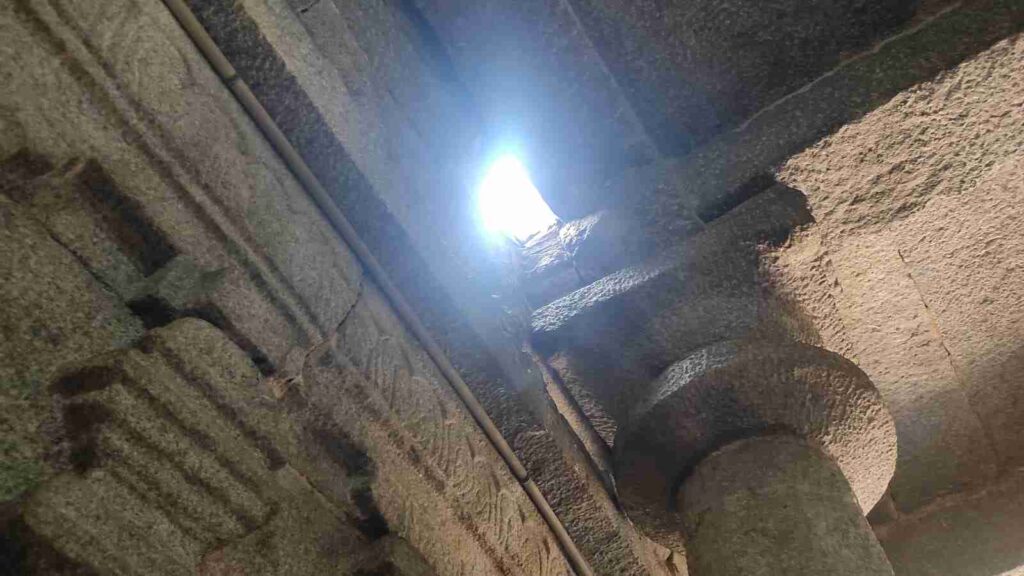
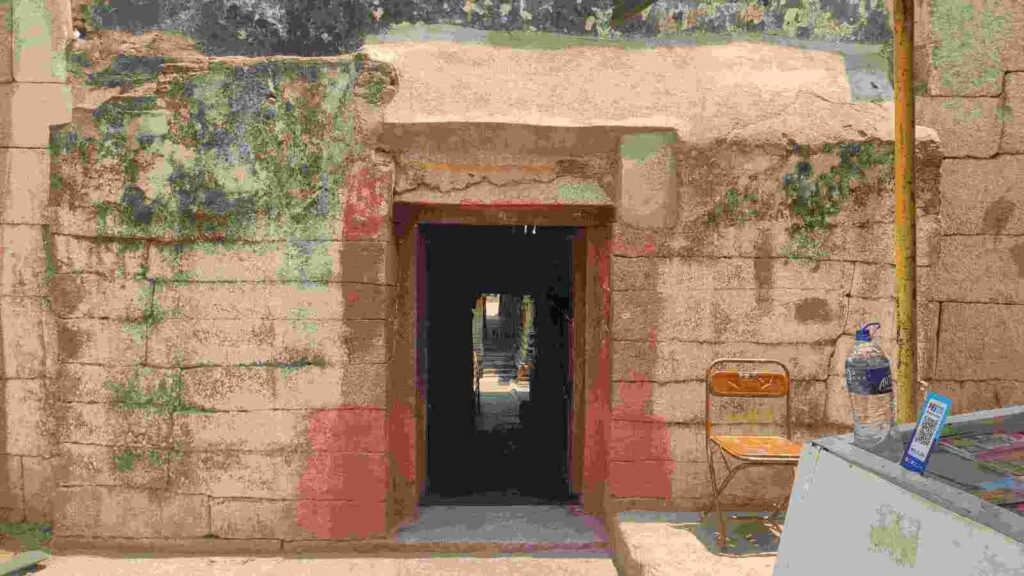
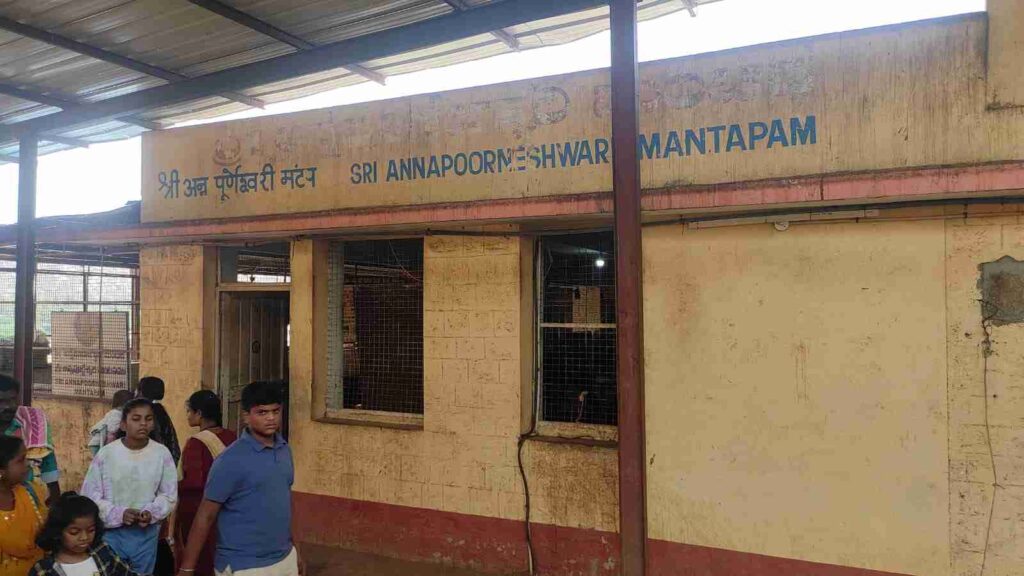
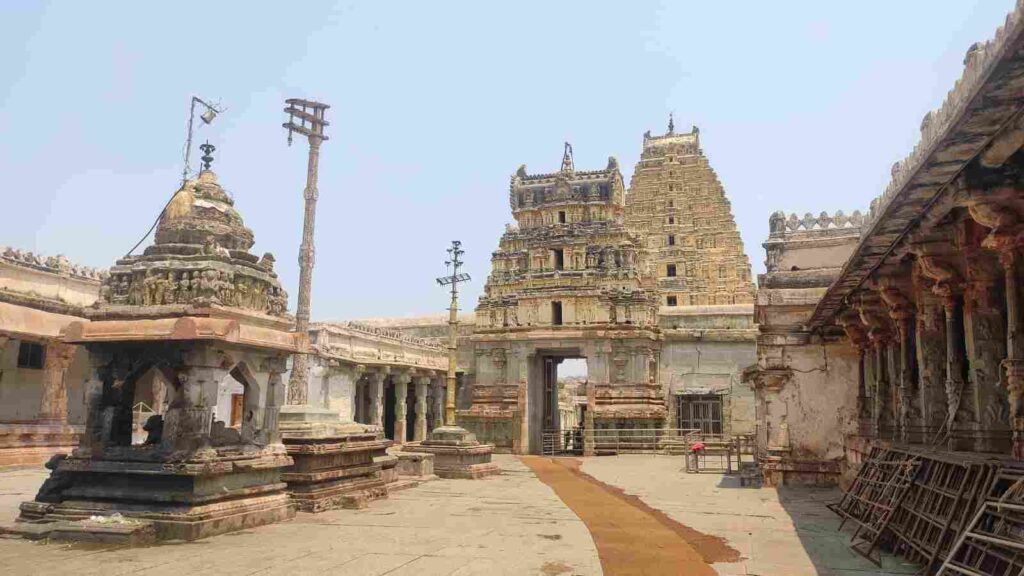


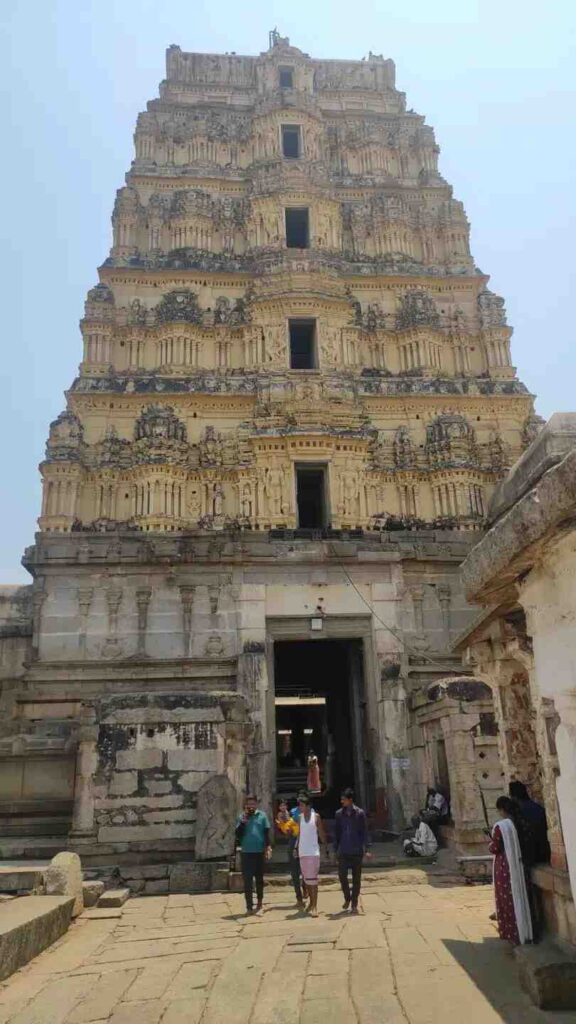
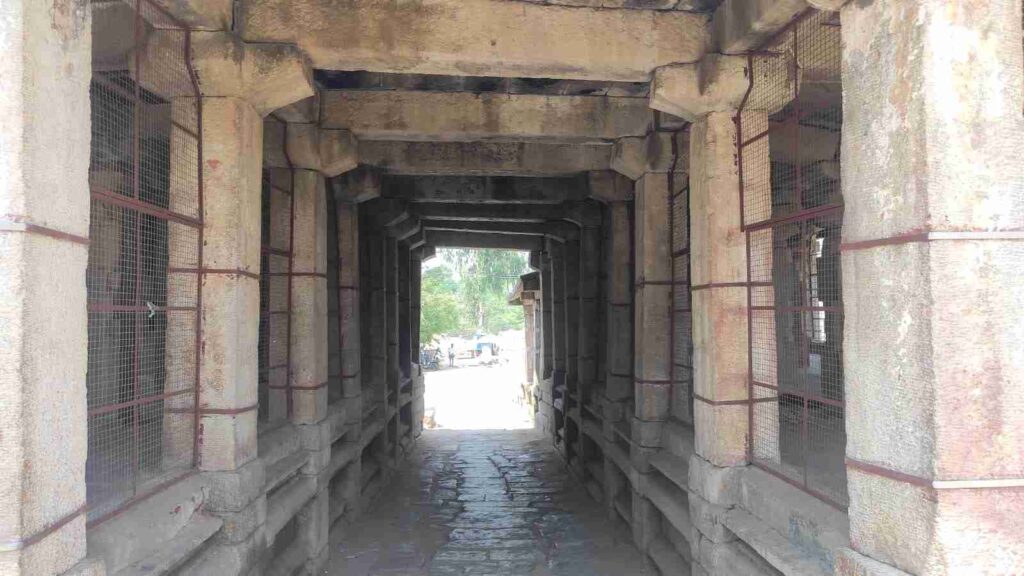
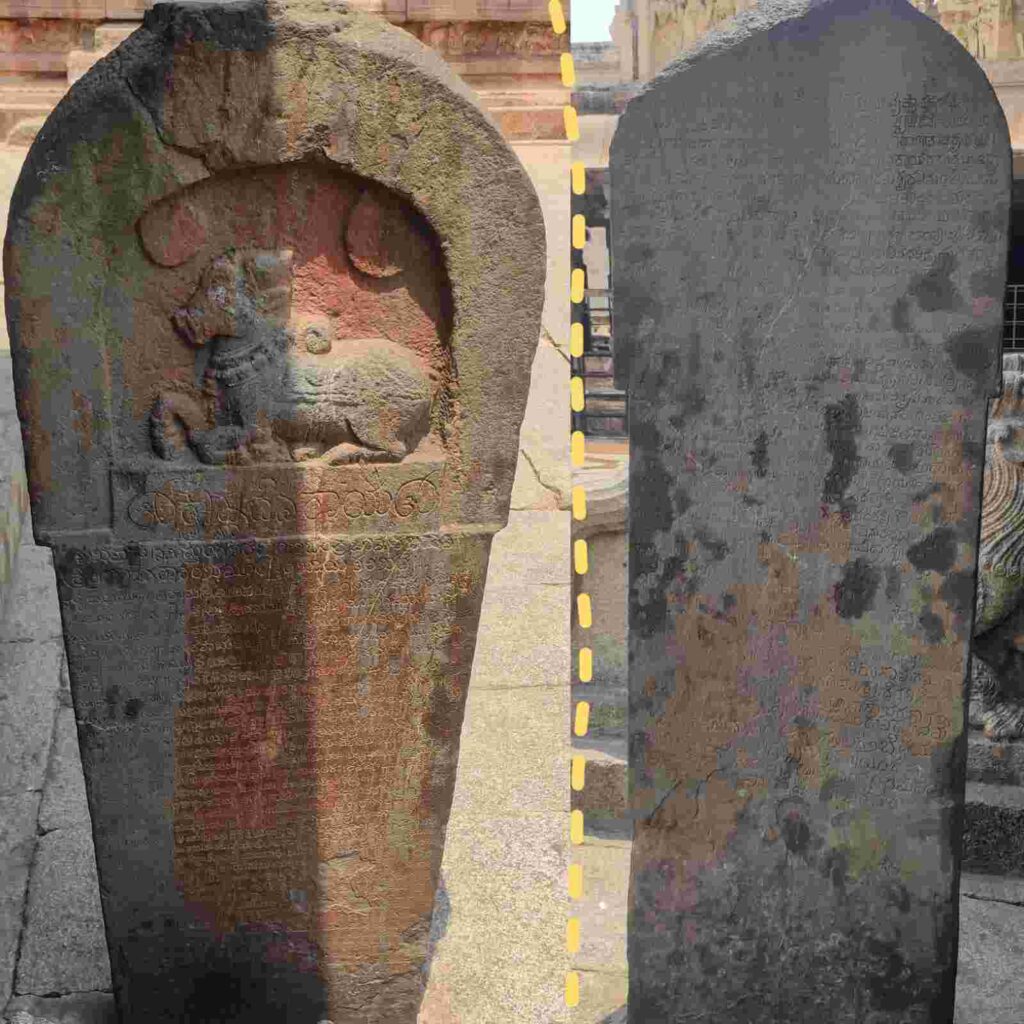
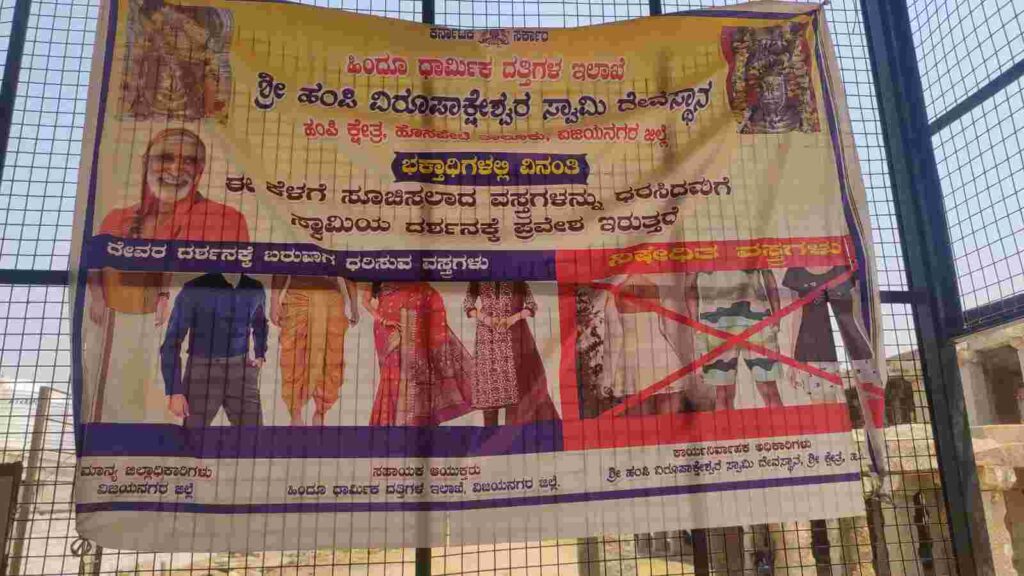
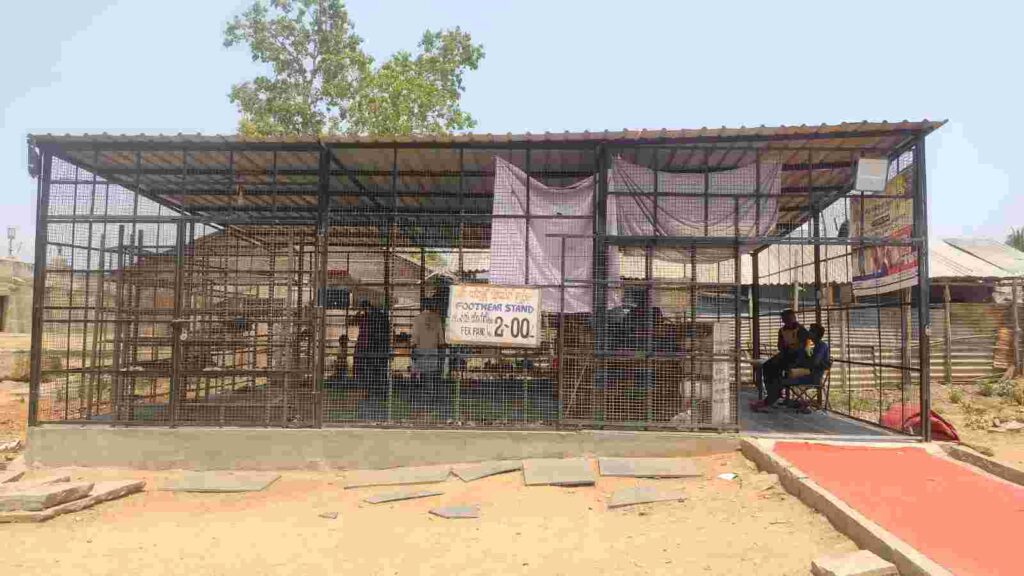
References:-
References from the Following Sources;
- ^[1] – WH Committee : Report of 10th Session, Paris 1986 – UNESCO
- ^[2] – Virupaksha Temple Hampi | Historical Places in Hampi – Karnataka Tourism
- ^[3] – Restoring the glory of Virupaksha temple – Deccan Herald
- ^[4] – Virupaksha Temple – Britannica
- ^[5] – Ceiling Paintings in the Virupaksha Temple, Hampi – A.L. Dallapiccola – Tandf Online.
- ^[6] – Hampi Virupaksha Temple Murals – YatrikaOne